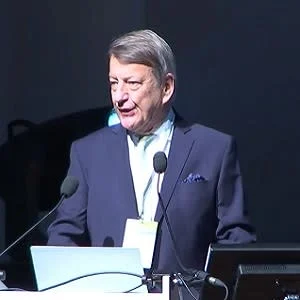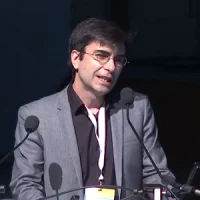The 39th International Symposium on Intensive Care and Emergency Medicine opened today in Brussels, Belgium. Professor Jean-Louis Vincent kicked off the proceedings with an insightful discussion on intensive care and emergency medicine.
Prof. Vincent thanked the organisers and the scientific advisors from all over the world who were attending the Congress this year. He pointed out that any proposal from any part of the world will be considered seriously at ISCIEM. The goal of the scientific meeting is to encourage the sharing of new information and not just limit itself to trials published in big journals. The ultimate objective is to learn together and to make a change in our everyday practice.
This year, #ISICEM19 welcomes a large number of participants and has in place an excellent scientific programme with 237 speakers, 482 posters and a total of 15400 minutes of scientific session. The stage is set for the best science to be presented, according to Prof. Vincent.
During his opening address, Prof. Vincent explained that the ISICEM meeting is more than a critical care meeting. Its focus is both intensive care and emergency medicine because the intensive care unit has patients from the hospital and the emergency room. He stated that if we want to improve the care of these patients, we need to understand the need for greater collaboration between the ICU and ED.
Prof. Vincent also discussed the role of the modern ambulance and highlighted the need for better communication between the hospital and the ambulance systems. Ambulances need to become more proactive; they not only should know which patient should be taken to which hospital but the hospital should also be prepared for the patient before they arrive. As Prof. Vincent highlights, it is now an obsolete concept for hospitals to wait for the patient to arrive. Clinicians need to know what is going on with the patient in the ambulance as now there are tools available that can easily communicate such information and relevant data in real-time. He outlined the vision of the modern ambulance with a possibility of cameras and audio-visual interaction so that everyone is aware of the status of the patient and what they will need when they arrive at the hospital.
Prof. Vincent also talked about the importance of minimising patient transfer delays to the ICU. When a patient is in the emergency department and needs to go to the ICU, it should be done as soon as possible because if we postpone the transfer, there is a higher risk of complications. When the intensivist becomes involved early on, the outcome is better. Studies shows a direct relation between poor patient outcomes and delays in the ICU.
Prof. Vincent concluded his opening session by once again emphasising on the need for improved communication between intensive care medicine and emergency medicine. He pointed out three key elements: collaboration, interaction, and efficiency that could make a difference in patient care. As we look toward the future, we need to look beyond the intensive care unit; we need to know what’s happening with the patient before they arrive in the ICU, while they are in the ICU and after they leave the ICU. This broader view can help us help our patients better.
Source: ICU Management & Practice
Image Credit: ICU Management & Practice
Latest Articles
ICU, collaboration, intensive care, patient outcome, emergency medicine, Jean-Louis Vincent, #ISICEM19, ambulance system
The 39th International Symposium on Intensive Care and Emergency Medicine opened today in Brussels, Belgium. Jean-Louis Vincent kicked off the proceedings with an insightful discussion with the participants.










